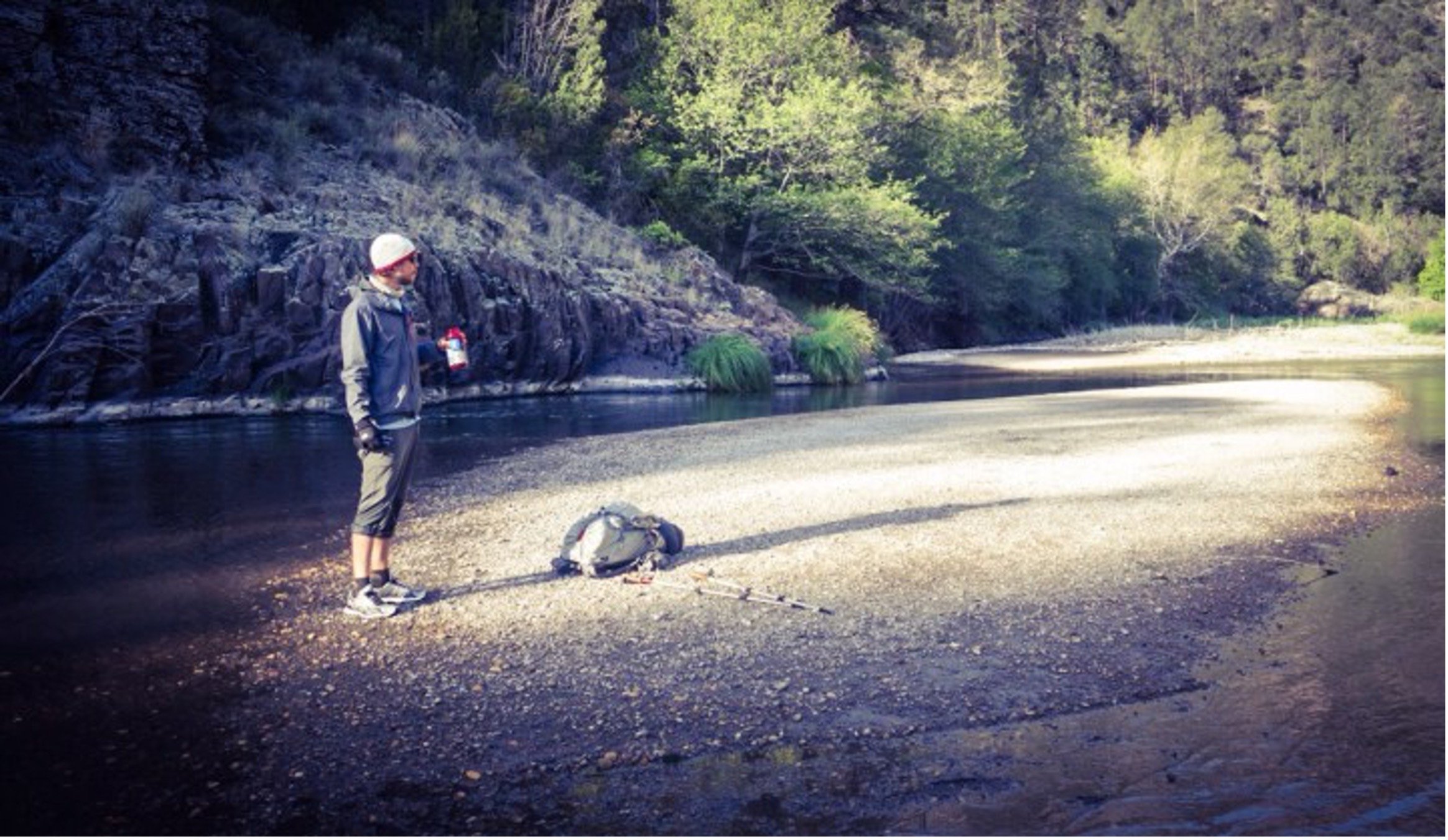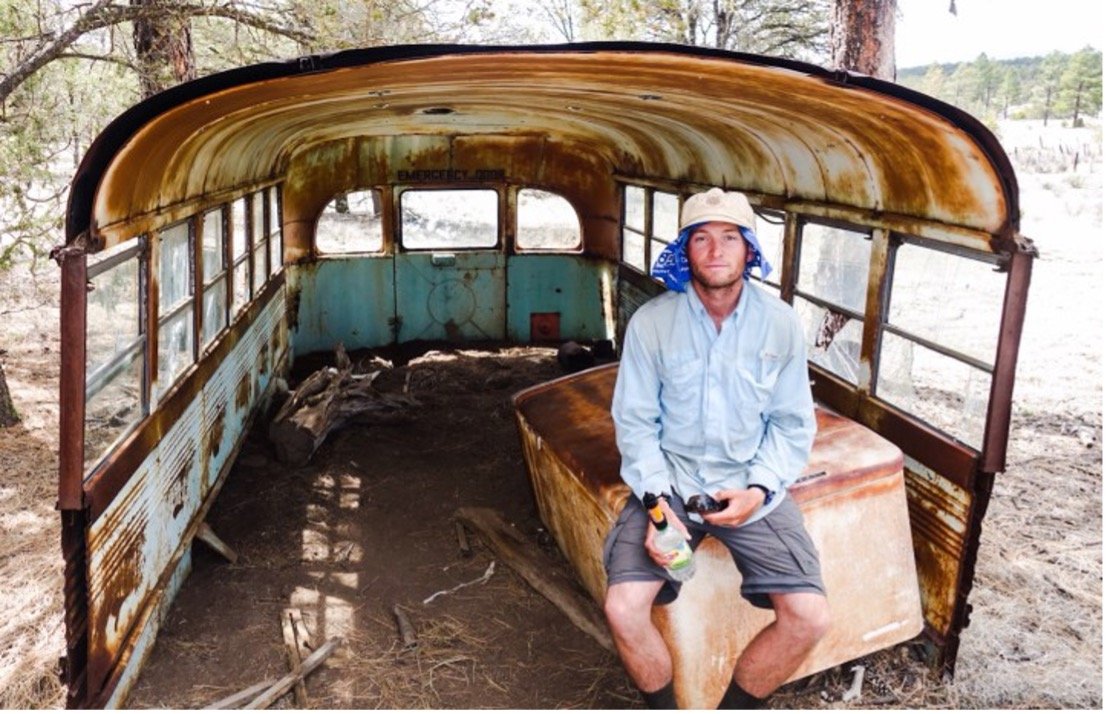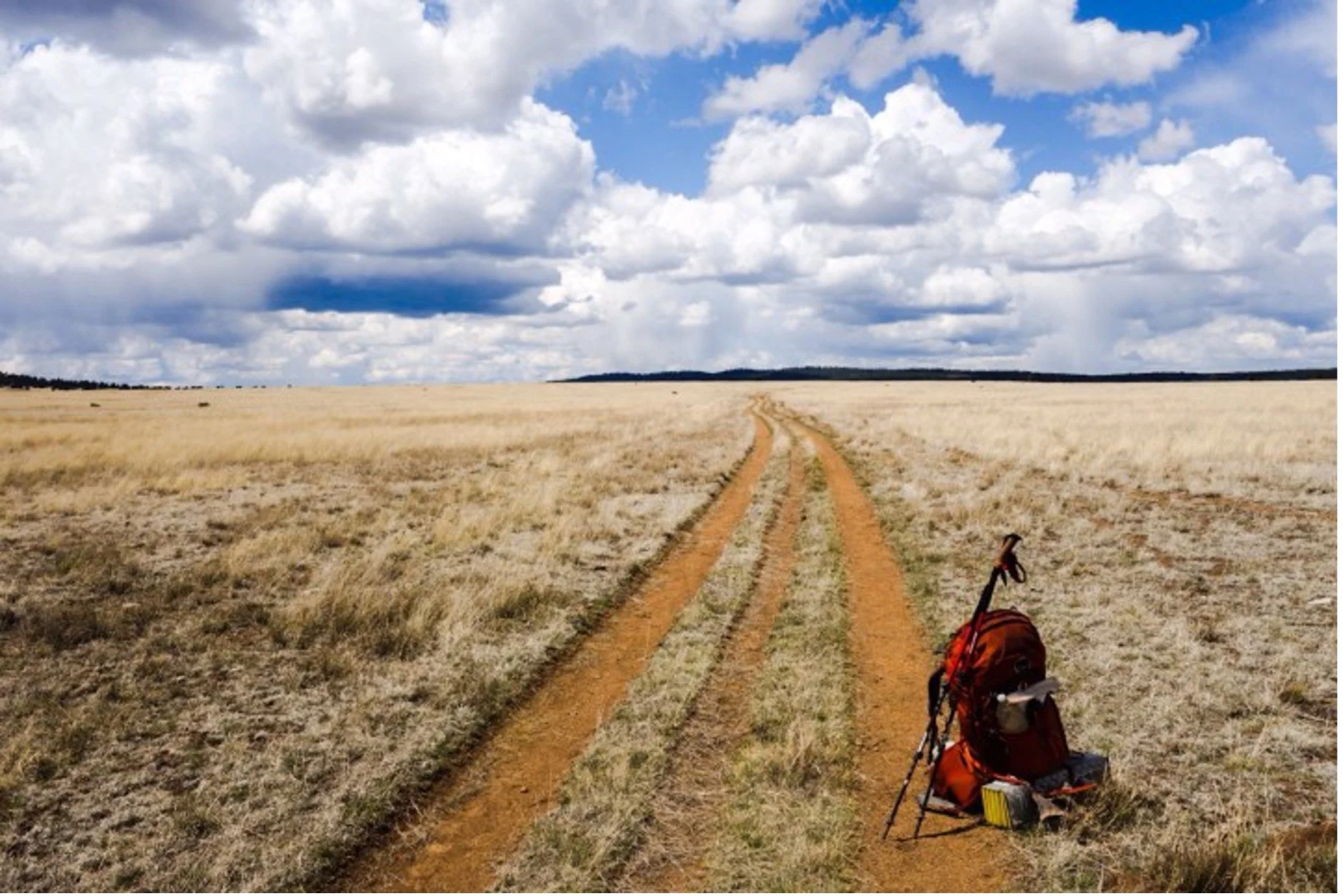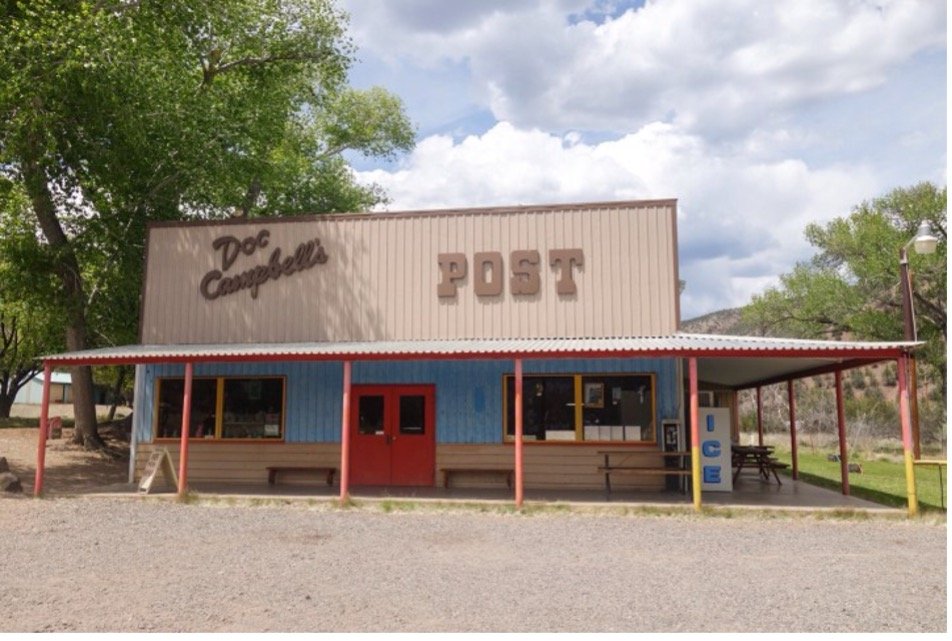Kids in the Canyon: Silver City to Pie Town
Making your way across LS Mesa, rounding Bear Mountain southwest of the Gila Wilderness, Chimichanga, your new friend from the trail, begins a conversation.
“If I could choose one way to die,” he says, “I’d be attacked by a wild animal.”
A few paces and you wait for the punchline. But no punchline comes, so you ask, “Are you serious?”
“It’d be the noblest thing I could do,” he says, “after all the animals I’ve eaten in my life.”
“That just sounds horrific,” you tell him. “And painful.”
“You can deal with pain,” Chimi explains. “You can deal with anything. And then you become part of that mountain lion or wolf, running wild and free.”
“Until it deuces you out.”
“Once it deuces you out, you become this tree,” he says. “The circle continues.”
You round the shoulder of Bear Mountain, a bulky triangle heavily shagged in pine trees. Your pack creaks, your breath comes smooth and easy. But you can’t shake the idea of your amigo’s implausible death wish.
“So you’re saying if a pack of wolves appeared on that hill over there and came down here to drag you off and maul you and eat you – you’d just let them do it?”
“I’d fight them,” he says. “I wouldn’t go down easy. But just think – the most alive you’ve ever been in your life would be the moment of your death.”
And so you follow along, thinking that you might be entering the wilderness with a madman.
You take the trail along Bear Creek, through Sycamore Canyon, over Tadpole Pass – a 3,000-foot climb. These massive features pass behind, falling between you and society, and you feel as though you are advancing toward something – or into something – though it’s hard to say what. Legs pumping, breathing, with sweat on your brow, the unknown compels you, each bend revealing something new – a new landscape, an adventure. You meet a hermit, investigate abandoned mining equipment, catch a white frog in a green stream. You recognize yourself recognizing the magic of the mountain, the voodoo of the hoodoo, and it fills you up, and your cup runneth over.
Then begins the descent from Tadpole Ridge, down and down, past Farm Flats and through Sheep Corral Canyon, you’re putting more land behind you, sealing yourself off, and this strange feeling of wonder and excitement intensifies. It’s as if Tadpole is a natural dam, all of civilization pinned back behind it, lapping at the crest of the ridge. At about 5,200 feet, you hook left into a notch within this sprawling wilderness, and you suddenly find yourself in the inner sanctum: The Gila River Canyon. Time slows. Walls rise on either side of the running emerald waters. The rest of the world falls away. You sense it at once – this place is a world apart, a realm unto itself.
The first thing you do is make a wrong turn. You walk for two miles, stop for lunch, for a swim. You submerse yourself in the water, frigid and shocking, stand, dunk your entire body again, opening your mouth, gulping the water, filling your belly – giardia and cryptosporidium be damned. Then you wade the shallows, scouring for interesting riverbed rocks. Chimi calls from the shoreline: “Dude, check your GPS.”
Back on the trail, you move slow. Admire the white-barked sycamore, the red-barked Ponderosa Pine, the purple lupine, the honeysuckle. You cross the river, fording it and fording it again, dozens of crossings, and when there are stones: hopscotch.
Night one in the canyon. Cowboy camped. You can’t sleep, everything is so strange, so you watch the stars roll from one canyon wall to the other. You are lost somewhere on a small thing floating around one of those. The owl hoots. The river murmurs. Like those stars you are … drifting … drifting ….
In the cold morning you fix breakfast: slabs of pepper jack, slices of summer sausage, honey, peanut butter, and a smashed-up Honey Bun pastry – all of this wrapped in a flour tortilla. Before walking, you fill your bottle from the river. As you kneel in the deep cool canyon, the frigid water drifting over your fingertips, an old gospel song pops into your head, and it stays there on repeat all morning:
As I went down in the river to pray
Dreaming about them good old days
And who should wear the stor-ied crown
Good Lord, show me the way.
You arrive late the next day at a place called Doc Campbell’s, pick up a food package sent by your mom. She bought a dehydrator and included four bars at 600 calories apiece. These bars later save you from sure malnourishment. For $6, you get a camping spot on a hard sandy beach near the river at the Gila Hot Springs. A hiker named Memphis buys wood and hotdogs, which he shares with you, and you roast them over an open fire.
In the hottest hot spring, you meet a pretty hippie. She travels the world – Bolivia, Vietnam, Indonesia – teaching yoga. Otherwise, she goes about rockhounding in the American West. She consults geology books, finding old mines and special geologic seams. From these she takes semi-precious stones, polishes them in a tumbler, and makes jewelry – necklaces and bracelets that tell of the history of the Earth. She explains many of the walls looming over the Gila River are formed of prehistoric coral – a conceit which blows your mind.
You tell her about your trip.
“It’s amazing how alive a person comes to the world when he’s traveling,” you say, trying to sound smart. “I think it’s best to live a nomadic lifestyle; it’s how we were meant to live.”
But she corrects you. She says, “Some people thrive when they’re traveling. That’s how I am. But other people are homebodies. My sister, for example – she has a family and kids and she’s settled and loving life. So, there’s really no one way to live your life. The thing is to just find what works for you.”
In the predawn gloaming you scoop instant coffee into your titanium cooking pot. A brisk morning, you stumble past tents with snoring hikers. Hot potable water pours from a spring-head shaped like a dragon, a veritable steaming spout. You fill your pot, making coffee, and sit in the spring alone, warming, watching the sunrise. “The best morning yet,” you think.
Memphis joins you and Chimi for the walk from Doc’s. You visit the Gila Cliff Dwellings, built by the Mogollon people some 700 years ago. Memphis helps put this in perspective: While Europeans were in the midst of the Middle Ages – knights of the round table – the people here dwelled in caves. You imagine their lives, this tribe of 40 people, living in these cool caves, hunting, trading, making fires. A link in the chain of the populating of the Americas.
Back in the canyon, the walls of prehistoric coral rise to over 1,000 feet. You ford the Gila in awe, camp at Jordan Hot Springs, enjoy this world within the world. Leaving the canyon, you see a big cow elk and chase it, stupidly thinking its a moose. You get close, take a photo, and in doing so, lose your partners
You navigate the next 24 hours alone, going cross-country, relying only on maps – your GPS died two days ago. Leaving a different canyon, you suddenly think you’re lost. Nothing on the map matches the terrain. Scared and adrenalized, you sprint up a hill that levels out at a wide mesa with blowing blonde grass. The mesa looks less like New Mexico than the African savannah. Several four-by-four roads trail off in different directions. Which to take? You select one using your compass, gritting your teeth, hoping you’ve chosen right. A few yards down the way you find the carsonite post blow down, forest road 652 – the one from your map – and you jump up and down, a celebration, and take a selfie.
Your friends catch you the next day. They had taken a wrong turn in the canyon. You camp on a hilltop surrounded by coyotes. By the sound of it, the packs must number in the dozens, all yipping and howling and chattering maniacally. They circle your tent. The closest of them share your hill. At it’s crescendo, the whole mad chorus echoes throughout the valley, a sound like a riot in an insane asylum. It’s not scary so much as exhilarating, to hear these feral beasts communicate in their bizarre languages. In the morning, Chimichanga sadly laments: “I don’t think we were invited to the coyote party.”
And you say, “The hell we weren’t; they were practically partying in my tent.”
The hike proceeds through the Tularosa Mountains, home to the Mexican gray wolf, before letting out onto a long and terrible dirt road walk to Pie Town. Time to reflect on what happened in the Gila Canyon – to ask yourself what that strange feeling was. It’s almost as if you were reaching back into yourself, finding something old and young and wonderful. You swam in the river and found snakes and explored and dreamed and slept under twinkling stars and built fires and made friends and got dirty and ate loads of junk food without getting fat. And you did all of this in a timeless fashion, without a thought for the future, almost as if it was summertime and you were in grade school. And then the realization dawns: You were kids again, kids in the world of the Gila River Canyon, a world that carries on in its removed self-containment, regardless of anything going on in the wider world around it.
The road takes you to Pie Town, where hikers funnel in to a place called the Toaster House. The Toaster House is like a flophouse except instead of heroin addicts coming in and out, it’s hikers. And while flophouses are depressing places, Toaster House is anything but. The core of the two-story house is built in what looks like Lincoln Log construction. With electricity, running water, a wide porch, nearby showers, a towering stack of maildrop resupply boxes, and old defunct toasters hanging decoratively over the portico – it contains anything a wary hiker needs. But there is no host; nobody lives here at all. It’s owned by a generous woman, Nita, who says anyone is free to come as they please. Everything in the house is shared in common: the food in the pantry, the washing machine, the beers in the refrigerator. Although it is somewhat cluttered and chaotic, what with as many as 20 people crashing here at once, it continually functions, remaining habitable – this owing entirely to goodwill. Thankful hikers take out the trash, sweep the floors, do the dishes. On the porch in the evening you sit around munching snacks to quell your insatiable hiker hunger and converse with others from the trek. You talk about landscapes and mountain snowpack and wildlife spottings and where to find water and there is very little conversation about boring things like what so and so does for a living. The place and its communal vibe is an anachronism, you think, something from a bygone era. You didn’t know places like this still exist in America, but you sure as hell are glad it’s here. A donation box hangs on the wall in the kitchen, and you give what you see fit. You plan to leave the next day, but it snows, so you stay – cozy in the toasty Toaster among friends.


















